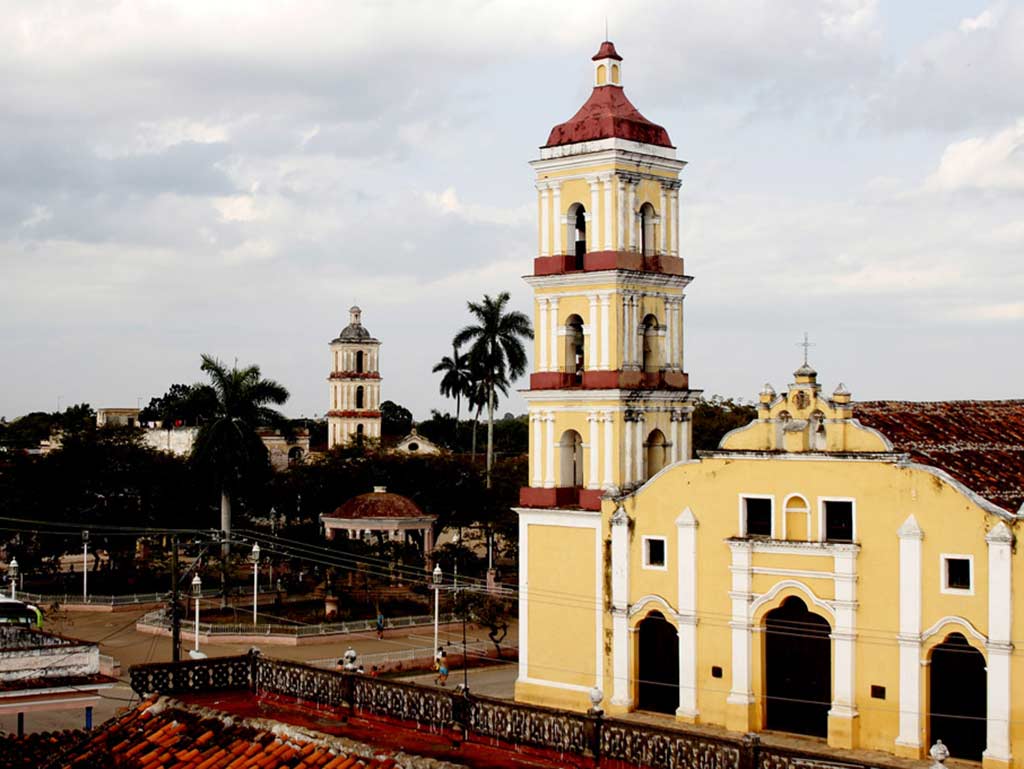The eighth village founded in Cuba back in the 16th century still survives in Villa Clara as a piece of history that resists time and still preserves an artistic and cultural trajectory that has turned it into a National Monument of the Island. Remedios, or rather, the Villa de San Juan de los Remedios de la Sabana del Cayo, was founded by Vasco Porcallo de Figueroa in the times of colonisation. Today, buildings are preserved in this town that show the level reached by the Creole craftsmanship during the colony and express the way of life, the class contradictions and the aesthetic criteria of the Cuban population throughout four centuries of history.
Remedios is a dynamic town with a life of its own, with excellent buildings, beautiful promenades and lively parks, schools and monuments. In the last decades, it has experienced a great social and cultural development. The most distinctive feature of the region is its famous Parrandas, annual celebrations attended by people from all over the island, which have been declared a national festival due to their antiquity, historical trajectory and unalterable beauty. They are so important that there is a museum dedicated to this phenomenon in the city: The Museum of the Parrandas, since April 1980, which brings together all the memory of the celebrations and preserves the heritage through photos, documents, models, costumes, musical instruments and handcrafted objects related to these secular festivities.
Remedios has, flanked by beautiful flamboyant trees, a very singular square, because it is the only one in the country with two churches: Nuestra Señora del Buen Viaje and the Parroquial Mayor de San Juan Bautista. In the latter there is an enormous gold-plated altar and inside a showcase or window you can admire a sculpture representing the Immaculate Conception, pregnant, which is said to be the only one of its kind in the world.
It is also characterised by the irregularity of its streets, with large eaves that protect walkers from the intensity of the sun, while at the same time creating an environment that invites one to enter the arteries of the centenary town. Another of the town's treasures is the museum dedicated to the outstanding Cuban musician Alejandro García Caturla, born there in 1906, which houses in his former home, numerous exponents linked to his artistic work.

